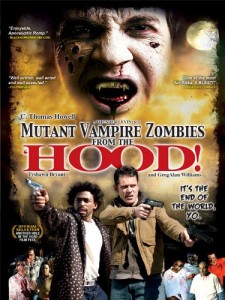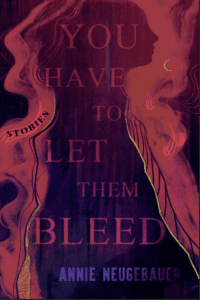Originally posted on December 22, 2010 at 5:50 PM
Let’s do a compare and contrast, children! Mmkay? Now, before you go pitching a fit because you know of a vampire that attacks violently or you’re a girl but you much prefer zombies, I’d like to say up front that there are exceptions to each of these “rules.” Every single one. So really, you don’t need to point that out (although if you do think of something that’s not on the lists, please let me know. I know I didn’t exhaust all of the possibilities!). This is for generalized concepting only, got it?
Similarities:
• undead
• humanoid
• supernatural
• prey on the living
• can be killed by burning or decapitating
• both come out of graves (at least originally)
• try to create more by attacking the living
• belong to horror genre
• spring from oral folklore
• considered soulless/evil
Differences:
• zombies can walk in sunlight; vampires can only come out at night
• zombies eventually decay; vampires are preserved immortally
• zombies are bloated/ruddy; vampires are unnaturally pale
• zombies eat flesh; vampires drink blood
• zombies shamble along slowly; vampires are preternaturally fast
• zombies come in hordes; vampires usually ride solo
• zombies are gross and scary; vampires (recently) are charismatic and sexy
• zombie attacks are chaotic and violent; vampire attacks are precise and purposeful
• zombies are just human; vampires can often shape shift into animals (bats, wolves, etc.)
• zombies are mindless; vampires are intelligent
• zombie fans are more likely to be male; vampire fans are more likely to be female
• the zombie myth is relatively concise; the vampire myth contains dozens of variations and details (silver bullets, crosses, holy water, garlic, no reflection in mirrors, can’t cross running water, have to count scattered rice grains, etc.)
Now, let’s discuss some of the more interesting ways these rules have been broken by various retellings, shall we? Let’s take the most basic assumption about vampires: they are “undead.” Not dead, because they move around, but not living, because they have no heartbeat or whatever. This seems pretty universal, right? Well, now there is this unique distinction cropping up between “living” and “undead” vampires. Kim Harrison’s Rachel Morgan series and Richelle Mead’s Vampire Academy series are two nice examples. In both, vampires can reproduce with other vampires to create “born” vampires (which are generally considered of a higher class in vampire society than “turned” vampires). These vampires are a species separate from humans, and when they die they will become “undead” vampires (which are often evil/soulless).
One of the most basic assumptions about zombies is that they are unintelligent. But if you consider the victims of the T-virus in the Resident Evil series zombies, some of them are actually hyper-intelligent. Likewise, the zombies in Simon Clark’s book Blood Crazy (which is one of my faves, btw) have a sort of collective intelligence, like ants, and can work together to serve a larger purpose in pursuit of their prey (who happen to be all of the world’s youth. That’s right; adult zombies vs. the kiddos, hells yeah!).
Vampires can’t walk in the sun, right? Wrong. How about Blade, also known as the Daywalker? Dracula could, despite popular belief, walk out in daylight. Damian can walk in daylight thanks to a special bond with Anita. Edward Cullen & co. sparkle but don’t combust when under the sun. And in the original myth, vampires could not only walk out in daylight, but were at their most powerful at high noon. To quote a completely random movie (Grease… did anyone else just get the random image of John Travolta with fangs?), “The rules are, there ain’t no rules.”
And of course, I’ve already mentioned the new trend of zombies getting faster and faster. 28 Days Later, Resident Evil, the Dawn of the Dead remake, Zombieland, and Land of the Dead are just a few examples.
Another assumption, about both, is that they belong in the horror genre. With the advent of vampire romances, I think many know that’s no longer true. And with movies like Zombieland and Shaun of the Dead, you’d have to do some serious convincing to make me believe they don’t belong in comedy.
And perhaps more interestingly than breaking the rules, is blurring the rules. When do zombies begin to act like vampires and vampires look like zombies? One wonderful example is the most recent remake of I am Legend starring Will Smith. I’ve written a blog about this before, but I’ll talk briefly about it again in reference to this series. In the book, the infected people are clearly vampires, so I went into the movie knowing the monsters would be vampires. But for people who didn’t know that, it’d be easy to see them as zombies. For one thing, their faces are all effed up, which is usually (in modern times) associated with zombies; vampires look like pale regular people. For another thing, zombies have come to be attached to viral apocalypse, even though this vampire book started that (see part III). So if someone didn’t know that history of the genre, it’d be easy to assume that a post-apocalyptic world with viral outbreak making infected humans hunt other humans was zombie-based. Moreover, we don’t really get to see the vampires attack anyone, do we? So the distinction between eating flesh and drinking blood is gone. All that’s really left is that the creatures can’t come out in the sunlight, and when it’s down to one thing, well, that could easily be attributed to a “quirk” in the zombie rules.
Other zombie-looking/acting vampires include those butt-ugly ones in 30 Days of Night and the equally butt-faced monster-vamps in From Dusk Till Dawn. Both vampire renditions reminded me more of zombies in their appearance (bloated, blistering, deformed), and both attacked with all of the chaos and rampage of fast-moving zombies. And some zombies that have sharp teeth (I can’t think of an example right now) sort of give off a fang-vibe that lends them to this blended vision of a vampire-zombie. And of course, there are always ridiculous purposeful combos, such as Mutant Vampire Zombies from the Hood (It’s the end of the world, yo!).
One thing I haven’t seen: zombies as a separate species, like vampires often are. Zombies can be reanimated, infected, contagious, and/or magic, but I’ve yet to see them as a Homo sapiens off-shoot. That’d be interesting.
Up next: whatever strikes my fancy. Any requests?
Be sure to check out the other posts in the series:
Vampires and Zombies, part I: introduction
Vampires and Zombies, part II: the popularization of vampires (in western culture)
Vampires and Zombies, part III: the popularization of zombies (in western culture)
Share this:






“Hollywood” added the cannot stay in sunlight or they burn up. They also changed it from eating flesh to only drinking blood. Old folk lore says they are weak in sunlight because they are nocturnal but they can come into sunlight. These are the 2 most common shared beliefs concerning vampires across many cultures.
That’s interesting! The myth has definitely gotten a lot more specific and “defined” over time, as all myths tend to do. I do remember lots of the historical versions mentioning drinking blood, though, and also a much stronger connection than is usually associated now with dreams and nightmares. I.e., a closer tie to succubus/incubus mythology. And as to the sunlight — yes. In fact, as I mention in my post, even Dracula was able to walk about in the daylight, and some of the older folklore mentioned high noon as a vampire’s most powerful time. Cool stuff.
If you think Zombie fans are mostly male you are WAY off course.. Check out any of the Facebook fan groups of: The Walking Dead, Fear the Walking Dead, OR Z Nation.. There are FAR more women in EACH of them.
I agree, Kim. This post is five years old, before the popularity boom of any of those things. Nowadays zombies have become much more universally popular than they were when I wrote this.